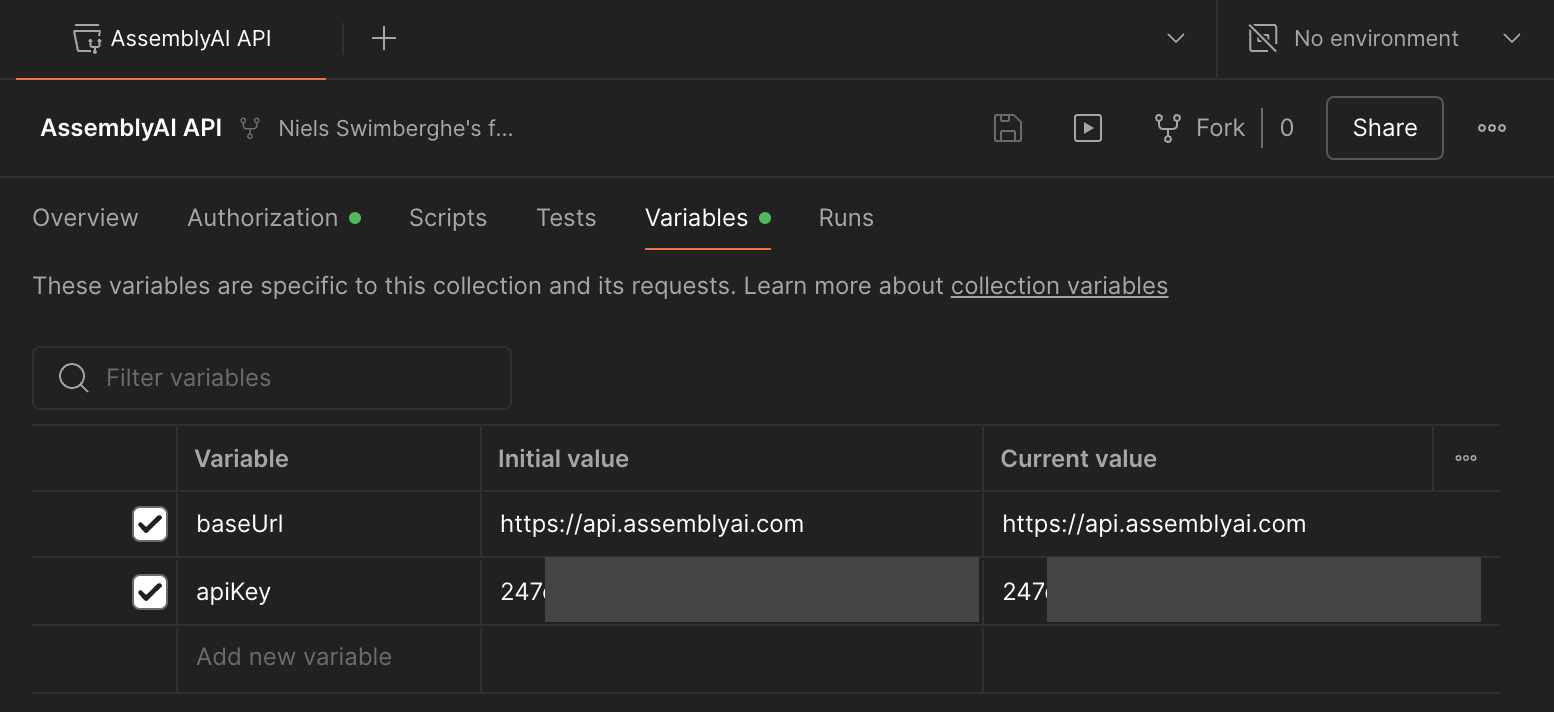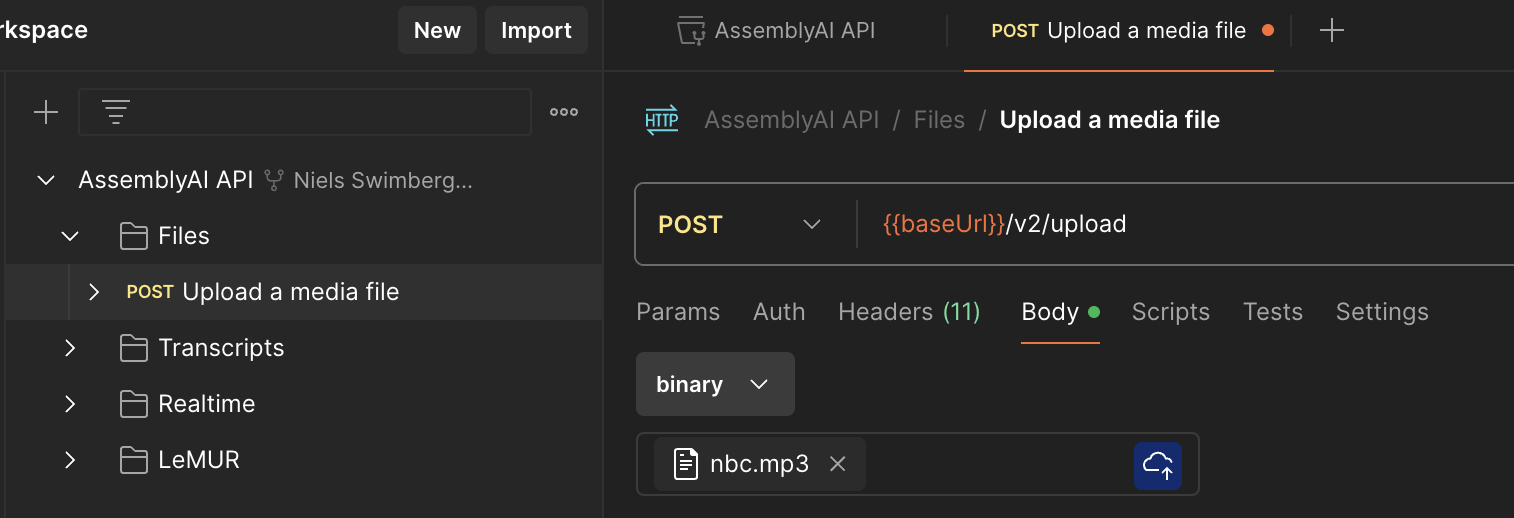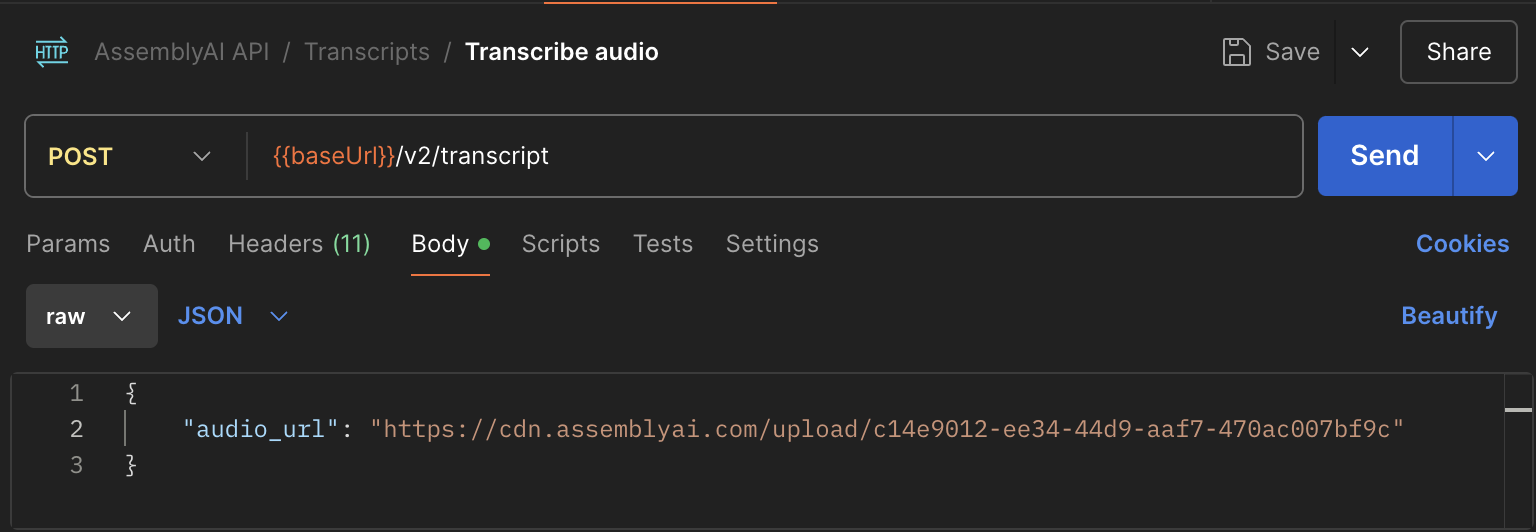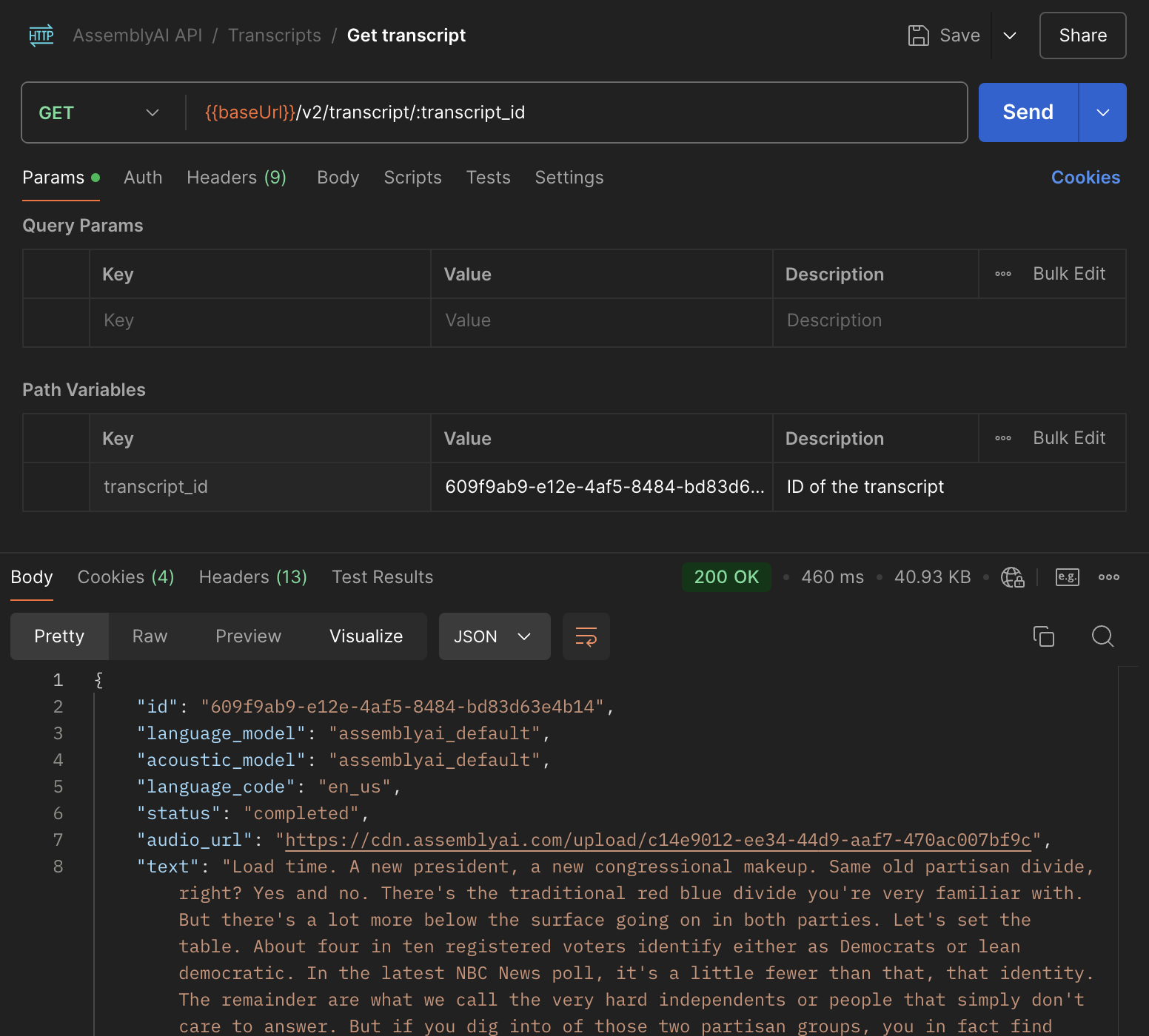The Postman collection for the AssemblyAI API
Postman is a user-friendly tool for testing API endpoints. The AssemblyAI API Postman collection contains all the HTTP requests you can make to the AssemblyAI API, so you don’t need to write them yourself.
Quickstart
Open the AssemblyAI API collection in Postman and click the Fork button. This will create a copy of the collection that you can edit.

Fill out the form and click Fork Collection.
Next, click on the Variables tab and configure the apiKey variable with your AssemblyAI API key.
You can find your AssemblyAI API key in the AssemblyAI dashboard.

Let’s upload an audio file:
- Open the Files > Upload a media file request
- Switch to the Body tab
- Change the dropdown from none to binary
- Select an audio file of your choosing, or download this sample audio file
- Click the Send button

Inspect the Body of the response and copy the upload_url value.

Now that the audio file is uploaded, you can transcribe the audio file.
- Open the Transcripts > Transcribe audio request
- Switch to the Body tab
- Find the
audio_urlproperty and update it to theupload_urlvalue from the previous request. - Remove all the other properties. Optionally, you can leave any property that you do want to use.
- Click the Send button

Inspect the Body of the response and copy the id value.

The transcription job will take longer depending on the duration of the file.
You need to check the status property to check if a transcript is ready.
The status goes from queued to processing to completed.
The status can also become error at any point. If an error occurs, you can find the error message under the error property.
- Open the Transcripts > Get transcript request
- Find the
transcript_idunder Path variables and update the value with theidvalue from the previous request. - Remove all the other properties. Optionally, you can leave any property that you do want to use.
- Click the Send button

Inspect the Body of the response to check if the status is completed or error.
If not, resend the request until it is completed or error.